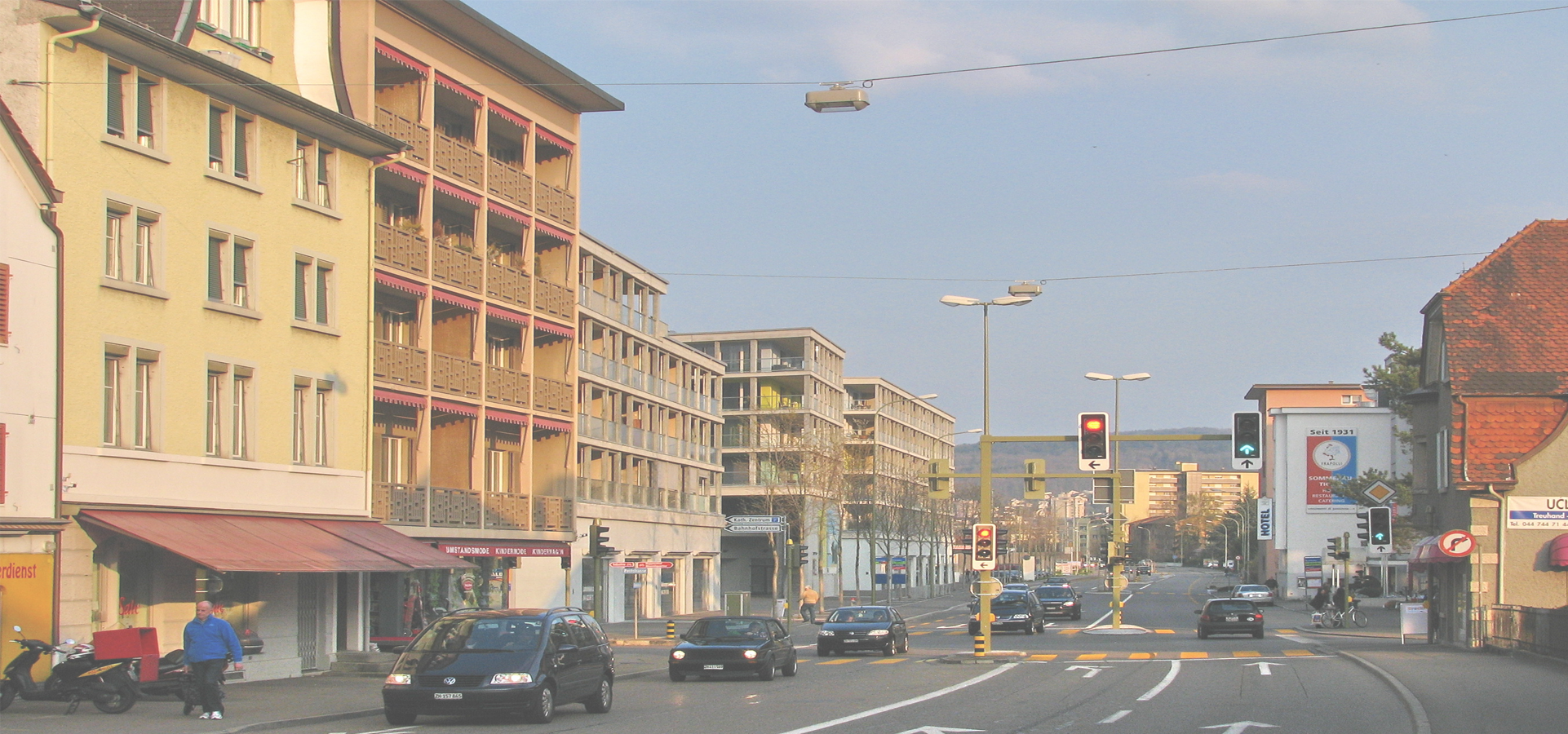Dietikon, The Canton of Zürich, Switzerland
🇨🇭 Dietikon is the fifth biggest city of the canton of Zürich in Switzerland, after Zürich, Winterthur, Uster and Dübendorf. It is the capital of the same-named district of Dietikon and part of the Zürich metropolitan area.
Geography The industrial city Dietikon is situated at an elevation of 388 m (1,273 ft) at the confluence of the Reppisch and the Limmat, located in the Limmat Valley (German: Limmattal), along the railway line from Zürich to Baden. Here and in the neighboring region, Spreitenbach, is also the large Limmattal rail freight marshalling yard.
Dietikon has an area of 9.3 square km (3.6 sq mi). Of this area, 17.2% is used for agricultural purposes, while 27% is forested. Of the rest of the land, 49.1% is settled (buildings or roads) and the remainder (6.7%) is non-productive (rivers, glaciers or mountains). In 1996 housing and buildings made up 33.8% of the total area, while transportation infrastructure made up the rest (15.3%). Of the total unproductive area, water (streams and lakes) made up 4.9% of the area. As of 2007 40.7% of the total municipal area was undergoing some type of construction.
The largest and best known forests of the municipality include the Honeret, Guggenbüehl and Röhrenmoos.
The Honeret forest lies on a side moraine of the Linth glacier ("Linthgletscher"). There are over 200 prominent stones through the woods, up to erratic boulders as big as 25 m2 (270 sq ft). The Honeret and the Guggenbüehl-Wald are separated by only one main street. In the forest, there are a few springs from which the brooks Tobelbach and Stoffelbach rise and then flow down into the Reppisch. Also in the forest lies the forest cottage "Lorenzhütte".
The Guggenbüehl forest lies wholly within Dietikon. Within the forest lies the "Giigelibode" pond. It has neither inflow nor outflow. A Vita course is in the forest.
Transport The municipality is located on the A3 motorway.
Dietikon railway station and Glanzenberg railway station are stops of the S-Bahn Zürich on the lines S3 and S12. Dietikon railway station is also the terminus of the line S17 provided by the Bremgarten-Dietikon-Bahn.
Between 1900 and 1928, Dietikon was the terminus of the Limmattal tramway from Zürich. The, now under construction, Limmattal light rail line will follow a similar alignment, albeit extended through Dietikon to Killwangen.
Waters Important running waters that flow through Dietikon are the Limmat and its tributary Reppisch. Wide brooks are the approximately 3 km (1.9 mi) long Schäflibach and the Teischlibach. The Schäflibach is created with the flows together from Allmendbach and Stockacherbach and leads into the Limmat. The Teischlibach originates from Röhrenmoos in the forest above Dietikon and also leads into the Limmat. The Marmoriweiher lies in the Grunschen a place used for gaming and grilling. The Marmoriweiher is an artificial pond, that was positioned for the water supply of the fire brigade. For this, a distraction canal was built with the Grunschen. Later, the pond of a marble factory served. This gave it its name.
History Dietikon is first mentioned in 1100 as Dietinchovin. Dietikon features several Roman ruins and also the Fahr Benedictine Convent, given by the House of Regensberg around 1130 AD, with a cloister church dating from the years 1743 to 1746. The Second Battle of Zürich was fought in Dietikon (September 1799) and the town name is among those inscribed at the pillar of the Arc de Triomphe in Paris, France.
Economics Among other companies, the Limmattaler Zeitung newspaper and Ex Libris are situated in Dietikon.
Visitor attractions There's the Bruno Weber Park in Dietikon respectively Spreitenbach, one of the few sculpture gardens and Gesamtkunstwerks in Switzerland. Glanzenberg was once a settlement along the river Limmat, but its fortifications seem to never have been completed, and it might have been destroyed in 1267/68, a legend tells. Its remains are to be found in a little forest along the Limmat, opposite the railway station of the same name. Also situated there are the walls of the former Glanzenberg castle, built in the late 12th century AD by the Counts of Regensberg.
Dietikon, The Canton of Zürich, Switzerland

Dietikon has a population of over 27,236 people. Dietikon also forms the centre of the wider Dietikon District which has a population of over 94,533 people. It is also a part of the larger Zürich area.
To set up a UBI Lab for Dietikon see: https://www.ubilabnetwork.org Twitter: https://twitter.com/UBILabNetwork
Twin Towns, Sister Cities Dietikon has links with:
🇨🇭 Calanca, Switzerland 🇨🇿 Kolín, Czech Republic 🇨🇭 Renens, Switzerland🇦🇹 Bruck an der Mur 47.417
🇨🇭 St. Gallen 47.423
🇭🇺 Pestszentlőrinc-Pestszentimre 47.433
🇭🇺 Pesterzsébet 47.433
🇷🇺 Novocherkassk 47.437
🇫🇷 Ancenis-Saint-Géréon 47.367
🇫🇷 Romorantin-Lanthenay 47.359
🇩🇪 Rüsselsheim am Main 8.433
🇩🇪 Ludwigshafen am Rhein 8.447
🇨🇭 Affoltern am Albis 8.45
🇩🇪 Villingen-Schwenningen 8.453
Locations Near: Dietikon 8.4,47.4
🇨🇭 Dielsdorf 8.45,47.483 d: 10
🇨🇭 Affoltern am Albis 8.45,47.283 d: 13.5
🇨🇭 Zürich 8.533,47.367 d: 10.7
🇨🇭 Bülach 8.533,47.517 d: 16.4
🇩🇪 Waldshut-Tiengen 8.2,47.617 d: 28.4
Antipodal to: Dietikon -171.6,-47.4
🇹🇴 Nuku'alofa -175.216,-21.136 d: 17076.6
🇦🇸 Pago Pago -170.701,-14.279 d: 16331.3
🇼🇸 Apia -171.76,-13.833 d: 16282.6
🇵🇫 Papeete -149.566,-17.537 d: 16133.6
🇺🇸 Hilo -155.089,19.725 d: 12370.5
🇺🇸 Maui -156.446,20.72 d: 12290
🇺🇸 Maui County -156.617,20.868 d: 12277.3
🇺🇸 Wailuku -156.505,20.894 d: 12272.2